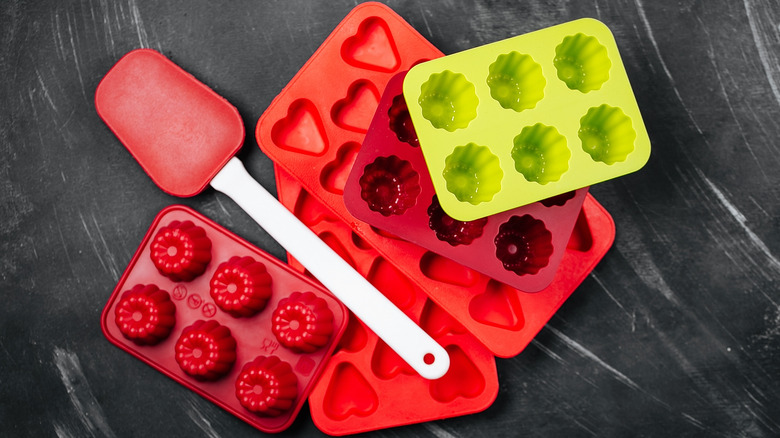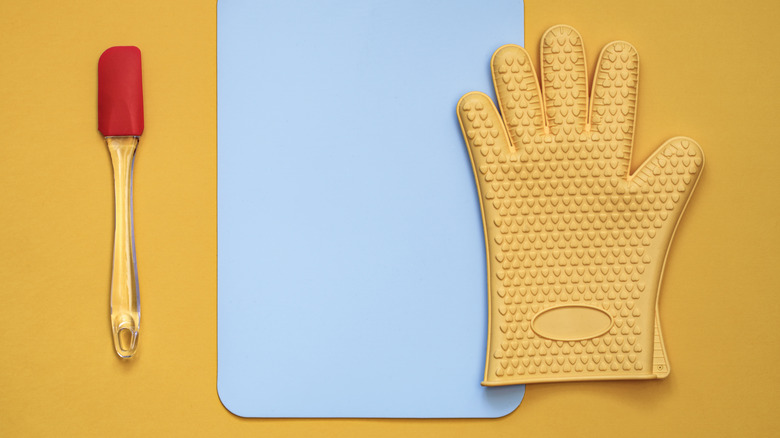Your Silicone Cookware Stinks Because You're Not Heating It Before Cleaning
Silicone cookware can be a godsend in the kitchen. Nonstick silicone baking mats make it easy to clean up even the stickiest caramel messes; silicone ice cube trays give amateur cocktails a professional touch. But the innovative material has downsides: After just a few weeks of use, silicone starts to stink. The seal on your Instant Pot starts to reek. That ice cube mold takes on a musty freezer smell. You find yourself wondering if you should throw away your baking tray after using it to roast onions and garlic.
Some sources will tell you to soak smelly silicone cookware in vinegar; others will tell you to coat it with baking soda or wash it with lemon. But these methods aren't always effective. For the smelliest stuff, you'll need to fire up the oven. Silicone is prone to trapping oils and odors. This is especially true of silicone bakeware: Silicone molecules expand when exposed to heat. As a result, the bakeware absorbs those oils and odors, which get trapped inside once the silicone cools and contracts. That's why a vinegar bath won't do — you need to permeate the silicone, not just treat the surface.
First and foremost, before heating silicone, check to make sure your cookware really is silicone. Some products use a silicone-rubber blend, others might have plastic components or wooden handles. If you're not sure, you should be able to find information on the product's packaging or manufacturer's website. If it's 100% silicone, you're good to go.
How to get the stink out of silicone
Set your oven temperature between 250 and 350 degrees Fahrenheit. While it preheats, wash your silicone cookware with soap and water — making sure to avoid soaps and detergents with essential oils or moisturizers. The oils will seep into the silicone, exacerbating the problem. (Your cookware could even make your food taste soapy.) Place your cookware on a baking tray and set the timer for 20 minutes. Don't worry if you notice smells emanating from the oven — it means those odor molecules are evaporating.
Give your cookware a good sniff once the timer goes off. If it still smells, put it back in the oven and check back in 10 to 20 minutes. Most smells should be gone within an hour, but it might take a bit longer. Once your cookware is odor-free, take it out and let it cool before giving it another thorough wash. If you want, add lemon or vinegar to the water.
Many silicone items, like muffin trays or loaf pans, are meant to withstand heat. But won't an ice cube mold melt? Nope — even products that aren't intended for high temperatures should be fine. Silicone tolerates heat well; most products can handle temperatures up to 400 or 500 degrees. But, since manufacturers don't necessarily heat-test products like ice cube molds, you might want to exercise caution. If you're nervous, bake them at a lower temperature or stick to the manufacturer's recommended cleaning method.

